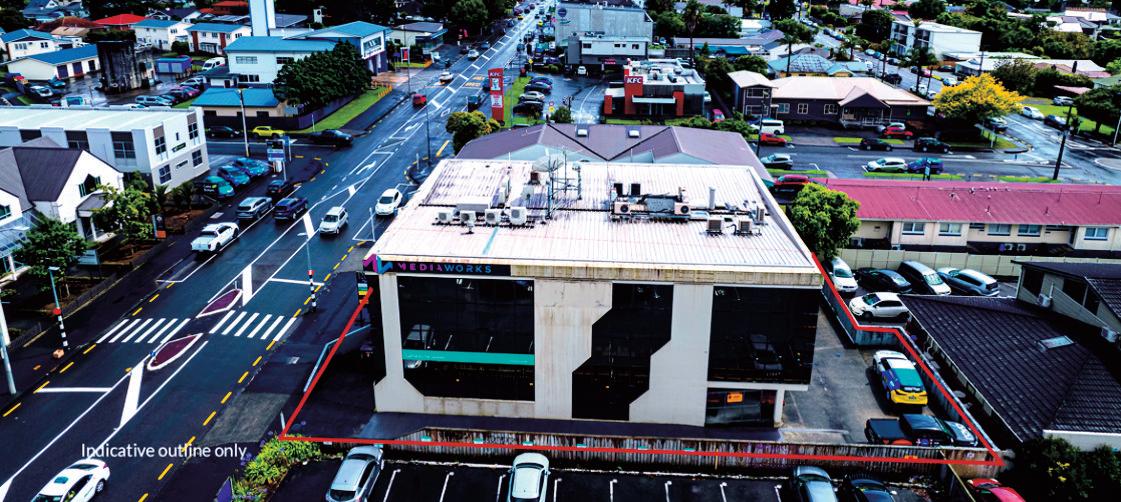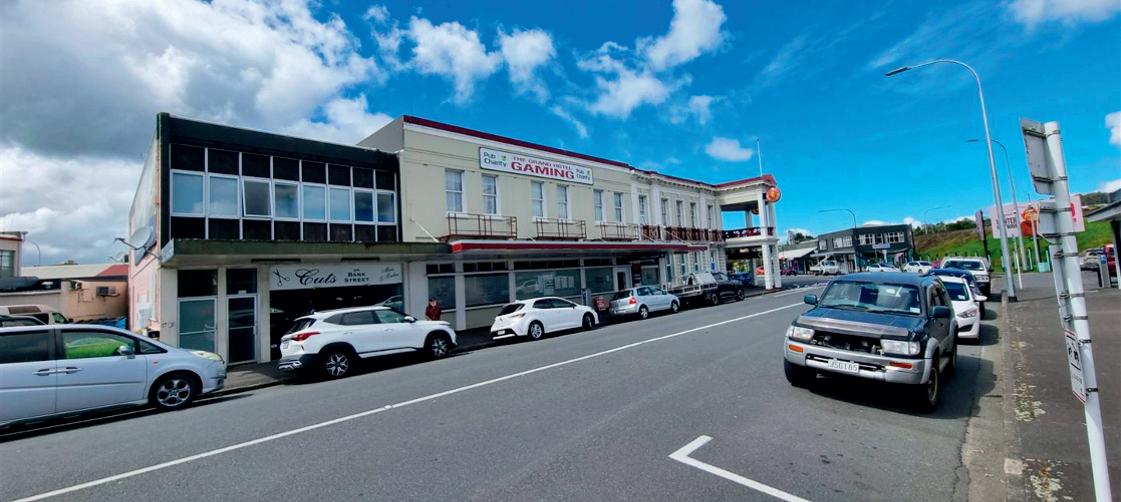KEYASSETS









Welcome to the Autumn 2024 edition of the NAI Harcourts Key Assets eBook.
As we transition from the summer to autumn seasons, reports of a bustling market filled with enticing prospects have emerged. Despite a sense of caution, the commercial property market in New Zealand for 2024 is brimming with healthy optimism.
Anticipating gradual growth, properties with high-quality tenants and sustainable features are set to be in high demand, particularly in the industrial and strategically positioned office sectors. While stable interest rates have sparked renewed interest in property acquisition, concerns linger over elevated borrowing costs and competition from alternative investments.
Potential policy adjustments could indirectly influence the market, and the likelihood of reductions in public sector workforce numbers may impact office space demand, notably in Wellington. With a surge in immigration and stable construction expenses, there is long-term optimism, complemented by the shift towards hybrid work models shaping office layouts.
The year 2024 is poised to be a discerning market yet displays signs of recovery and a revitalised sense of hope for investors focusing on quality opportunities.
This comprehensive eBook will feature a diverse array of commercial properties available for sale or lease throughout New Zealand, along with opportunities to purchase businesses. Our aim is to simplify the process of discovering the newest commercial prospects nationwide for you.
The overwhelmingly positive feedback from our previous edition speaks volumes, and we are confident that this edition will prove just as valuable to each of you.
Should you have any enquiries or require further information about any of our listings in this eBook or beyond, our experienced and professional local NAI Harcourts sales consultants are readily available to assist you. Contact us without hesitation.
Bryan Thomson Managing Director, Harcourts New Zealandnai.harcourts.net/nz/key-assets

The latest data from realestate.co.nz suggests that now could be a good time to list a commercial property for sale with low new listing numbers during January, meaning little competition.
While January is typically a slow month in the commercial market, the number of new listings to go up for sale was down by 2.4% on January last year, and more surprisingly, was down by 4.1% compared to December.
Around 160 commercial properties were listed for sale across New Zealand during January; the majority were industrial (64), 36 were retail, 32 were office, 27 were commercial and industrial land, and the remainder made up of various mixeduse or specialist assets, falling under investment opportunities on realestate.co.nz.
Office properties saw the biggest lift in new listing numbers year-on-year, up by 33.3%, followed by commercial and industrial land, up by 3.8%, and retail, up by 2.9%. Industrial new listings were back by 8.6% year-on-year.
Sarah Wood, CEO at realestate.co.nz, says commercial property listing numbers were generally low throughout 2023.
“There were signs of hesitancy from commercial vendors, with the number of new listings coming onto the market remaining relatively flat each month when comparing year-on-year.
“March and November, which are usually the bigger listing months, saw especially low numbers in 2023, down by 24.8% and 13.9%, respectively, compared to the previous year.”

“So far, 2024 seems to be following a similar trend, but it will be March and April when everyone has returned from summer breaks and ready to start making moves with their commercial property strategies for the year until we will have a better understanding of how the market is shaping up.”
The average asking price across all commercial properties listed in New Zealand during January was $2.4 million.
Retail assets saw the biggest year-on-year growth in price, hitting an average of $4.8 million, an increase of 105% compared to January 2023.
All other property types saw year-on-year dips. Investment opportunities had the greatest decline, back by 67.1% to an average of $2.0 million.
Sarah says the substantial price growth in the retail sector is likely down to high-value retail assets listed in January, including a near-new 4,836 square metre retail centre for sale in Queenstown.
Unsurprisingly, prices vary greatly across the regions, with vendors asking the most for commercial and industrial land in Auckland (average asking price of $3.9m), followed by industrial buildings in the Waikato (average asking price of $3.65m).
During January, the lowest-priced assets could be found in Canterbury, where commercial and industrial land was listed for an average of $500,000, or the Bay of Plenty, where retail properties were listed for an average of $715,000.
nai.harcourts.net/nz/key-assets



Sarah says buyers are also delaying their engagement with the commercial market.
The number of active commercial property seekers on realestate.co.nz during January was back by 27.4% compared to January last year but was up by 16.0% compared to December.
However, international buyers are showing more interest in the New Zealand market, with international enquiries up 27.1% in January yearon-year. Searches by international buyers are largely coming from Australia, Hong Kong, and Singapore.
Industrial buildings and warehouses remain the most popular property type among property seekers, accounting for around 40% of all
nai.harcourts.net/nz/key-assets
commercial property searches in 2023.
Hotel/Motel/Leisure properties followed with 18.8% of searches, which is more than the share of listings for this property type.
Retail property accounted for 16.1%, and offices accounted for 8.8% of searches.
If you’re a commercial owner looking to divest property in 2024, realestate.co.nz has new commercial packages allowing maximum exposure for your asset to a dedicated property audience.
Talk to your preferred real estate agent about how to make the most of your advertising spend



We’ve been helping people buy, sell, or rent property since 1996.
Established before Google, realestate.co.nz is New Zealand’s longest-standing property website and the official website of the real estate industry.
Dedicated only to property, our mission is to empower people with a property search tool they can use to find the life they want to live. With residential, lifestyle, rural, and commercial property listings, realestate.co.nz is the place to start for those looking to buy or sell property.
Whatever life you’re searching for, it all starts here.
nai.harcourts.net/nz/key-assets


Opportunity knocks at Northland’s Marsden Point
Considering that it’s one of Northland’s leading businesses, Marsden Maritime Holdings Ltd (MMH) has until now maintained a relatively low profile. But the company is leading significant expansion and infrastructural development on 180 hectares of what must be some of New Zealand’s most attractive greenfield commercial and industrial development land at Marsden Point, near Whangārei.
Greater Auckland, the country’s largest market, is less than an hour’s drive away.
MMH defines its purpose as “helping to transform Northland’s economy” by developing business ecosystems and infrastructure at Marsden Point. Thereby encouraging business growth and investment in the area, and economic diversification and development right across the north.
It is also a 50 percent shareholder in neighbouring Northport, which has exciting plans to grow its container handling, storage and logistics capability. These ambitions will make Northport, and Marsden Point, an indispensable part of projected population
nai.harcourts.net/nz/key-assets
expansion and significant economic growth north of Auckland.
While MMH’s business interests are focused on the port, they extend well beyond it – into the area of commercial and industrial development. MMH owns 65 hectares of land directly adjacent to Northport. This ‘port zone’ land is consented for heavy industrial use and is available for long-term lease to companies wanting to make use of the port. A further 115 hectares, zoned as Business 2 and 4, sit behind this. MMH has built several commercial units here, providing accommodation for businesses servicing the area’s burgeoning residential, industrial and manufacturing market.
The jewel in the crown of the MMH’s property holdings is Marsden Cove Marina. High demand for berth space at Auckland marinas has resulted in significant interest in this busy facility with 236 berths. It lies adjacent to Hopper’s residential canal development on Whangārei Harbour.

The expanse of Bream Bay, the Hen and Chicken Islands, the Tutukaka Coast and the stunning Poor Knights Islands and marine reserve are but a short sail away.
The area is experiencing a surge in residential development. Around 1,200 new properties and several retirement villages, including the Anchorage Retirement Village, are located nearby. Commercial units at the marina therefore provide excellent opportunity for hospitality and retail businesses looking to relocate and expand. MMH is currently aiming to expand the diversity of food outlets and eateries in the area, catering for the needs of not only local residents but also visiting yachties and boaties.

Vision for Growth. This planning render depicts an expanded Northport, along with Marsden Maritime Holdings proposed He Ara Huringa business park, in which it intends to offer for lease customisable land and infrastructure packages in four distinct business ecosystems; port, industrial, commercial and marine.
The marina also offers significant potential for businesses offering marine and maritime services. It features New Zealand’s newest boat haul-out service and fully sealed, heavy-duty hardstand facility.
MMH chief executive Rosie Mercer describes Marsden Point as an ideal location for businesses wanting to shift to Northland from other, more congested and expensive centres. Or for Northland businesses who can use the proximity to the port, service providers or like-minded organisations to prosper and grow.
Northport is a key enabler in the recently adopted Whangarei District Council plan to realise the industrial, commercial and residential potential of Marsden Point.

Jewel. The jewel in the crown of the MMH’s property holdings is Marsden Cove Marina. Commercial units at the marina provide excellent opportunity for hospitality and retail businesses. The marina also offers significant potential for businesses offering marine and maritime services.
An independent report by Polis Consulting Group into the social and economic potential of plans for growth at Northport states that increased port operations will expand opportunities for directly related port and logistics business in Northland.

Key enabler. Northport figures large in the recently adopted Whangarei District Council plan to realise the industrial, commercial and residential potential of Marsden Point.
nai.harcourts.net/nz/key-assets

It says, too, that access to a competitive port with containerisation will attract new industry, businesses and workers to the area – expanding the economic diversity at Marsden Point beyond primarily shipping and marine services. It says industrial growth around Northport will also accommodate and stimulate indirect and induced economic growth.

Room to grow. Northport already has resource consent to extend its 570-metre wharf by 270 metres. It is currently applying for permission to reclaim land and create an additional 250 metres of berth space, for a containerhandling, storage and logistics facility.
Expansion at Northport will increase Northland’s trade access to both local and international markets. Local industry will benefit from increased logistic efficiency and capacity in the region and local businesses gain better market access to Auckland, the Upper North Island and internationally. This enhanced access will also create new market opportunities for Northland’s growing primary industry.

Logs on high. The port’s growth has so far been driven by Northland’s vibrant timber sector. But the company has an eye on a far more diverse future.
Ms Mercer is adamant; Marsden Point offers heaps of opportunity for businesses with plans and vision. Good transport links, abundant and relatively inexpensive space, no congestion and enviable lifestyle options for employees.
She points to the difficulties involved with setting up or operating any industrial or logistics-based business in a city facing well-documented congestion issues.
“When you look at the price of land in Auckland, the social pressures, the transportation and commuting issues, and the general overheads involved in doing business in Auckland, why would you unless you really, really have to?”

Container potential. Northport is already a container port and has plans to grow further this side of the business.
To see the vision for growth, visit : https://marsdenmaritime.co.nz/
nai.harcourts.net/nz/key-assets


The Oxford Dictionary defines “Restraint of Trade” as “a contractual term that limits a person’s right to exercise their trade or carry on their business”.
Examples of restraints of trade clauses can be found in various types of contracts: employment; partnership; and contracts for the sale and purchase of a business, being a few examples.
In business sales, the restraint of trade essentially acts to prohibit or prevent the vendor from engaging in a similar business, for a specified period, after the business has sold.
When considering whether a vendor has breached a restraint of trade clause, the courts will look to whether the vendor’s new business is “the same”, or “substantially the same” as the business which was sold.
So, what constitutes “the same or substantially similar”?
In many situations the answer will be obvious. However, sometimes the analysis is far more difficult. It may even require the court to hear expert evidence, evidence designed to assist it to assess whether there is any distinguishing feature sufficient to adequately distance the business that has been sold from the new business:
Does the substance or operation of the new business trench directly on the business that was sold sufficient to conclude that the vendor is in breach of the restraint?


What would a reasonable person understand to be “substantially similar” to the new business, from the business that has been sold?
These questions were considered by the Court of Appeal in Gordon & Aluminate Solutions Limited (ASL), a decision which highlights the importance of using wording in restraint that accurately reflects both parties understanding of the scope of the restraint agreed.
In that case the appellants (the Gordons) had sold their majority shareholding in their company TSIL. TSIL manufactured, imported, sold and installed distributed partitioning systems and door systems.
The agreement between the parties included a restraint of trade clause which was designed to prevent the Gordons from engaging in any business that was substantially the same or similar to the business they were selling – the key feature being partitioning and door systems.
nai.harcourts.net/nz/key-assets

Subsequently the Gordons (and their other company ASL) purchased Autex PSL which sold aluminium extrusions used to mount and hold interior windows, doors and fixed partitions. At the time Autex described its products and “door systems” and “partitioning systems”.
The purchasers of TSIL sued the Gordons/ASL for breach of contract – restraint of trade.
The High Court judge looked closely at the work undertaken by each of the businesses.
He noted that TSIL manufactures, imports, sells and installs distributed partitioning systems or door systems. These systems are usually installed in office-buildings to partition space into officers – including walls, windows, and doors. They are often purchased at the recommendation of building contractors, quantity surveyors, and architects who design fit-outs.
As for ASL, the judge found that it sold all the material physical components of partitioning systems and/or systems except glazing, wall panels and door hardware.
The judge concluded that ASL did not manufacture door systems or partitioning systems (or import them) but found that it did distribute a sufficiently large proportion of a partitioning system for the purpose of the restraint of trade clause and effectively distributed those systems, thereby competing with TSIL commercially.
The Gordons/ASL appealed.
The Court of Appeal disagreed with the High Court.
It found that the words of the restraint clause did not enlarge protection beyond the business that had been conducted by the vendor at the time of the sale. The three judges found that the word “Systems”
was a crucial component of the restraint and that this related to operable wall, partitioning and/or systems.
The court accepted the only expert evidence put before it that TSIL manufactured and installed complete bespoke (or highly specialised) panelised folding door partition systems and did not sell component parts. The expert also noted that TSIL undertook this activity from a large factory with large, complex machinery sufficient “to manufacture entire partitioning systems ready for delivery and installation”.
On the other hand, ASL operated from a very small warehouse set up for storage and not manufacturing. The warehouse stored component parts – aluminium extrusions, steel stud sections and sound rated mineral wool. ASL had no machinery to manufacture door systems, movable walls or partitioning systems.
In upholding the Gordon/ASL’s appeal, the judges noted that a complete car may be assembled entirely from spare parts, but no one would sensibly suggest the spare part dealer is in competition with the car dealer for the sale of cars, or that a restraint of trade clause applying to the sale of a used car dealership, could legitimately preclude the vendor from operating a parts dealership.
It concluded that ASL’s functional role was as a components wholesaler; TSIL’s was not. There was therefore no breach of the restraint of trade clause.
Question: Would the decision have been different if the restraint clause had included reference to the “components” of the systems? Perhaps a different outcome.
nai.harcourts.net/nz/key-assets


















































